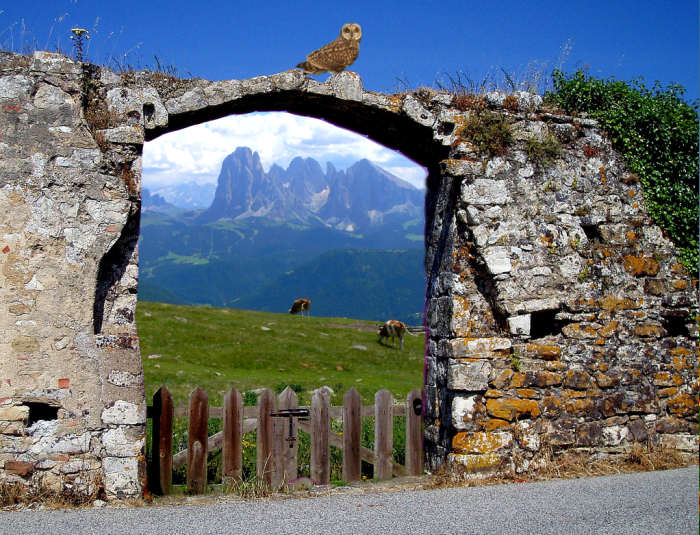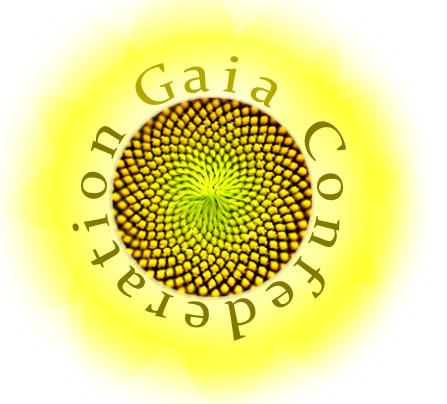
You wish to look futurely; you wish to see into your future.
You may, by examining your inner landscape:
You hold an emotion. You may create a physical landscape from this emotion. You may create an entire scene stemming merely from one emotion. Allow yourself to move into the area of the emotion, examining it, and from this allowing yourself to visualize, springing initially, colors that you may identify with this emotion. Create these colors into a landscape. It may be a forest; it may be a lake; it may be a beach; it may be a field. It may be any landscape that you choose; and as you visualize this landscape and you move into examining this, knowing that this landscape is created by one emotion or one thought or one physical feeling, you may allow yourselves to interpret the elements of the landscape, which may also inform you of the direction that you are moving into, which shall be offering you information of what you are creating futurely.
It may be more beneficial and more consistently clearly expressed if you develop a landscape which is not necessarily an actual landscape that you are familiar with, one that allows for the incorporation of more imaginative creations, one that may be real in your terms but not necessarily one that you are actually familiar with. As an example, you may develop an inner landscape that is incorporating an ocean theme, and in that ocean theme, perhaps you engage the imagery of icebergs and walruses.
Now; walruses may not necessarily be a creature that you are entirely familiar with, and therefore, it allows you to incorporate more imaginative imagery and allows you to generate more creativity, which is more stimulating. In landscapes that are more familiar to you, they may more easily fade, for they are not as stimulating for you limit your creativity with them. In a manner of speaking, you are not stimulating yourself. Therefore, the landscape becomes somewhat boring, for it is perceived to be limiting in what you can insert in it.
Therefore, if you choose an unfamiliar landscape with some familiar imagery that is somewhat familiar, merely in form, but not entirely familiar in environment, it allows you to express much more creativity and insert different images into your landscape and alter the images at times. Your glacier may be different shapes, your icebergs may be in different positions, your fish or your plants may be different, the atmosphere may be different, it may be sunny at times, or you may be visualizing under the water, or you may be visualizing storms. In this, you allow yourself much more of a broader experience with the imagery that you create.
Or you may choose other types of imagery. My suggestion to you would be to focus first upon a chosen creature, and in choosing a creature, allow yourself to choose one that you perceive to be playful or gentle or powerful, which the optimum would be to choose a creature that incorporates all of those elements. A creature that is not familiar within your environment. Therefore, that allows you more creativity to engage designing different types of landscapes that accommodate that creature.
Question: How do we manipulate the creature, the landscape? The area of internal landscapes that I’m interested in is repairing health problems.
The point of the inner landscape is to focus your attention in a manner in which you are generating a creative action, and therefore expressing a creative energy within yourself. The point is to be affecting of physical manifestations and altering them through the action of the inner landscape without concentrating upon the effected element of the physical body consciousness.
This is what generates the success of this type of action, for if an individual generates some type of physical manifestation within the physical body consciousness that the individual perceives to be damaging or uncomfortable or debilitating in some manner, the automatic response to physical manifestations is to concentrate your attention upon it, which merely perpetuates it. Therefore, the significance of the inner landscape is that you are moving your attention to different imagery, allowing yourself to trust your physical body consciousness that it knows how to interpret your inner landscape and what the communication is.
In a manner of speaking, it is an intentional action of moving your attention in another direction and trusting yourself and your manipulation of your physical body consciousness. You do not generally incorporate an objective awareness of, or attention to, how certain organs within your physical body function, but you trust that they function properly.
For in your trust of yourself to be generating adequate functioning of certain elements of your body consciousness, it does not require your attention. You are not continuously, throughout your day, in every moment, objectively expressing to yourself to breathe in and out to sustain what you term to be life. Correct?
Therefore, what you are doing is you are trusting that you are communicating to your physical body subjectively to instruct it to breath in every moment, and it does. In moving your attention to the inner landscape, you are not focusing your attention upon the area of your physical body that you have generated a manifestation within that you dislike; therefore, you are not concentrating upon it. You are moving your attention to an interaction of a landscape that appears to be entirely unrelated to your physical body consciousness, but this is an intentional objective manner in which you are expressing a communication to your physical body consciousness, which your subjective awareness translates with the intention that you want.
Remember, the objective and the subjective move in harmony and neither follows the other. They move in harmony. Therefore, if the subjective is moving in one direction, the objective is also; if the objective is moving in one direction, the subjective is also. If you are objectively concentrating upon dis-ease, the subjective communicates to the body consciousness and creates that. It instructs to create that. If you are not concentrating objectively upon dis-ease, the subjective reflects that also and instructs the physical body consciousness to function in different manners, and that alters the manifestation or the dis-ease.
That is the point of the inner landscape. You are engaging the object of the inner landscape, the animal, as your champion. The animal is you, it is your gladiator, and within the animal’s environment is the manifestation that you wish to alter. But you do not create the manifestation in the landscape as some imagery that you shall associate with in a negative manner. Therefore, the object of the dis-ease, so to speak, becomes perhaps insects that the animal finds delicious. Therefore, it is an element that is pleasing to the animal. Or perhaps it is beautiful ripe fruits that the animal revels in, and therefore, the animal naturally consumes these beautiful fruits.
The animal is engaging a natural action and is generating an action that you may view as playful and pleasing. The animal may also be challenged by other creatures which are other elements of the dis-ease, and in those challenges, the animal is expressing its strength. It may also be presented in its environment with an infant animal, and therefore, it is allowed to express a gentleness and a nurturing.
All of the elements in the environment that the animal interacts with are all different aspects of the dis-ease. This allows you to create imagery that is nurturing, is supportive, is trusting, is generating strength, and is also expressing a playfulness; which, all of those actions are contrary to the expressed energy of dis-ease. Therefore, all of those energies dissipate dis-ease.
Question: For what period of time do we do this? Do we do this for ten minutes, an hour or two hours?
It is unnecessary to be engaging lengthy time periods. You may incorporate several of your minutes, whatever you are most comfortable with. Some individuals enjoy playing within the inner landscape and may choose to be engaging somewhat of a longer time framework, perhaps twenty or thirty of your minutes, but that is not necessary. It is merely a matter of preference.
I also suggest that individuals initially allow themselves to engage briefly their inner landscape, perhaps two or three times within each day, and subsequently generate less times of incorporating the inner landscape within a particular day. But initially, it is beneficial and reinforcing if you engage the action briefly several times within one day. That allows you to become more familiar with the action, more comfortable with the action, and it also interrupts your concentration upon the actual dis-ease.
The more you interrupt the concentration upon the dis-ease, the less you reinforce creating it.



